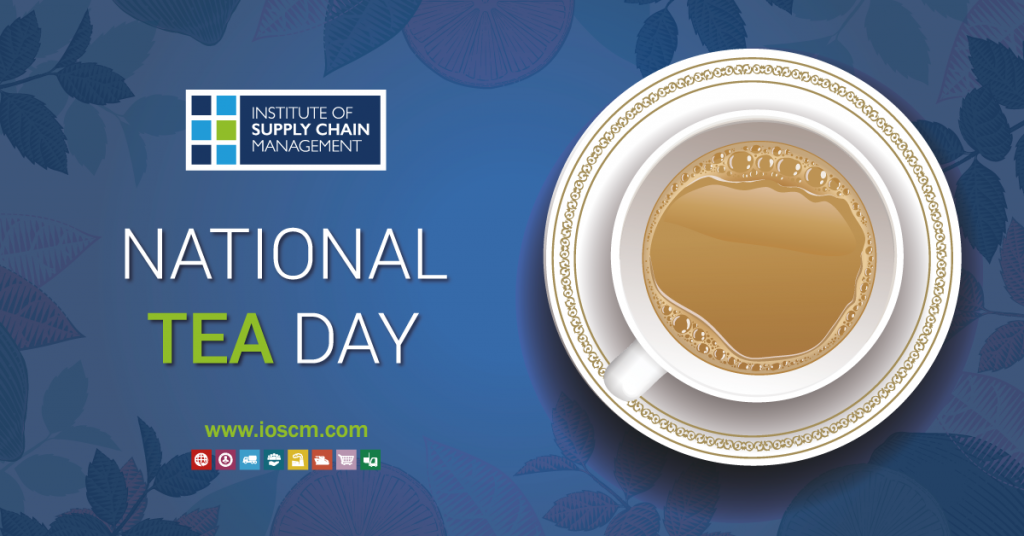
In true British fashion, we have dedicated a full day to a good old cup of tea. With 84% of the British population drinking some form of tea every day, it’s clear to see why we’re so enthusiastic about it.
For most of us, it’s pretty easy to pop to our local supermarkets and pick up a box of our favourite tea. But before we’re able to do this, the tea leaves go through a complex production and supply chain process to get it from the plant to the teapot.
There are seven steps to getting tea leaves ready for sale, this includes:
Growing – tea derives from a plant, a species of evergreen called Camellia sinensis. All types of tea come from varieties of this plant, whether it’s black, oolong, white, pu-erh or green. Tea plants can take up to three years to produce a harvest and tend to be grown in tropical regions of the world, as they require a warm climate.
Harvesting – most harvesting is done by hand due to the fragile nature of picking tea leaves, although some can be harvested mechanically depending on the variety.
Withering – the next stage is to reduce the water content of the leaves by up to 70%. When this process is carried out, antioxidants are developed.
Rolling – the tea leaves are then rolled into thin wires, ready for oxidation
Oxidation – the leaves are left in high temperatures over a certain period of time. During this time, the leaves change colour, from green to beige to dark brown. The darker the leaves, the stronger the tea!
Drying – when the leaves have been oxidised they are dried using a hot air dryer, which reduces their water content further, to around 3%. They are then ready to be sorted and packed.
Distribution – after the drying process, the leaves are ready to be distributed. As the majority of tea leaves are grown in tropical regions of the world, it can take some time for them to reach us in the UK. All tea leaves are packed into watertight containers and are shipped either via sea or air. Most tea leaves are shipped via sea freight, as this tends to be cheaper than air freight.
Responsible Sourcing
The pioneering fair trade company Traidcraft plc have played a key role in ensuring that when it comes to international trade within the tea market British brands take their responsibilities seriously. In 2018 Traidcraft published a report called ‘The Estate They’re In’, which calls for UK tea companies to trade in a more transparent way. It highlights the deep-rooted challenges in Assam and details what individual companies – and the wider industry – are doing about them. Household names such as Yorkshire Tea, Tetley and Clipper are all committed to responsible sourcing of their products, from their leaves through to their herbs and packaging. The modern supply chain’s of these well known brands, and many smaller more local brands, are working in a sustainable way to keep the shop shelves full of our favourite brew.
The Ethical Tea Partnership are supporting companies with responsible sourcing, the development and protection of the supply chain in the state of Assam (the world’s largest tea-growing region by production) and protecting the tea growing regions by preparing for climate change which may impact their production in future years. You can read the full report HERE.
Once the tea leaves have been imported, they are transported to factories and producers across the country. Here the leaves are utilised to create a variety of products with different blends and infusions added to exacting specifications that have been carefully designed. The ‘tea-bag’ is a commonly bought product for many households across the UK as it is a quick and easy way to make a drink, the more traditional tea-drinkers and the teapot fans prefer to use tea leaves. The great news is that due to the sheer size of the tea supply chain there are plenty of options available to choose from.
It takes a lot of hard work to get the tea ready for sale, but I’m sure we can all agree that it’s worth the effort!
You can mark national tea day this year by taking 10 minutes to enjoy your favourite cuppa and use #Nationalteaday or #Britishnationalteaday to share on social media. Or why not use the opportunity to invite some friends and family over for a catch up over a pot of tea and biscuits? Whatever you decide to do, we hope you get involved and enjoy!

